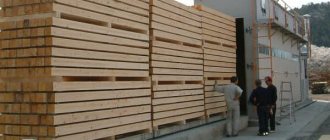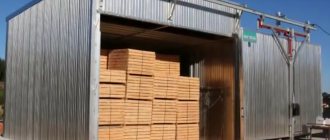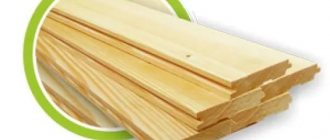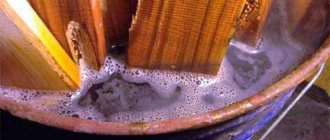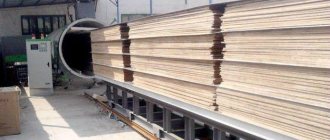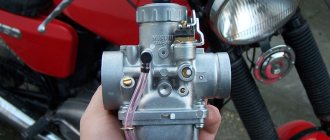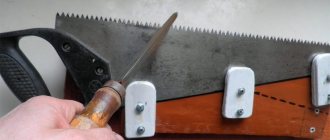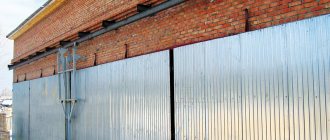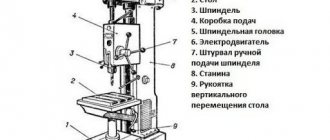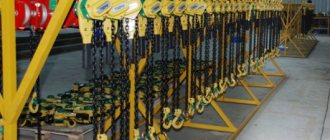Should I buy a drying chamber or build it myself?
Buying a wood drying chamber or building it yourself depends on your goals and, of course, your skills. If you do it for yourself and for small volumes, you can build a dryer yourself. But if we are talking about industrial scale and serious production, then here I am categorically against amateur performance. It's better to buy and not suffer.
Fire in the drying chamber
3,000,000 rub. - this is the price that the owner of the production where I worked paid for my carelessness and desire to earn extra money. And it was like this. In 2004 I got a job at a small production facility on the outskirts of Moscow, in addition to producing various products for gardeners (I worked in the production of gazebos and benches), the company tried to provide wood drying services to third-party organizations.
The lumber dryer immediately seemed strange to me, but I only found out later that it was homemade. Some Uzbek unloaded and loaded wood materials there, and no one was particularly involved in maintenance. The fans were used without reverse, but that's not so bad. Some parts of the metal elements were not grounded at all. In addition, add improper maintenance - there is a half-centimeter layer of dust on the heaters. I am generally silent about the presence of proper ventilation. So, one fine day I come to work, and my place of work is on fire, or rather not exactly it, but the drying chamber itself and the wood warehouse nearby.
Unfortunately, not only part of the company’s own property burned down, but also the customer’s wood drying material. And what was inside, and what was stored outside. I remember some strange people came to sort things out, apparently the customer was not an easy one. I didn’t interfere much in this story so as not to irritate the boss once again, I limited myself to only once saying that I warned him and pointed out the shortcomings... but the man himself is inherently impenetrable and stubborn. I think even this incident taught him little. I worked there for about another month and left.
But let's get to the point. In general, you can make a drying chamber yourself without even fearing that it will burn out, if you do everything correctly. To do this, you need to read at least the book “Drying Wood” by Peich/Tsarev, or even better by Krechetov. After all, there are actually many nuances that need to be taken into account. Even the storage of wood requires compliance with certain rules, which are set out in SNiP 03/21/2003 “Warehouses of forest materials”.
What to consider:
- Wall material.
- Gate tightness.
- Wood loading method.
- Type and location of fans.
- Coolant and humidification system.
- Humidity sensors and psychrometer.
This is the most basic thing and I haven’t mentioned it yet about automation; automatic or semi-automatic for a drying chamber is generally the topic of a separate article, we will touch on it later.
A very common mistake with homemade ones is that drops of water get on the humidity sensor when sprayed. As a result, the humidity readings suffer and incorrect data is sent to the automation.
It is also worth remembering that fan drive motors operate in an environment of high temperature and humidity, and this requires special requirements for these devices and sometimes poses a problem in terms of their trouble-free operation.
My homemade drying chamber
I have a 4 cubic meter wood dryer in my workshop for my personal needs. Its price is very low, because I made and assembled it with my own hands. I didn’t bother with automation, it’s a complex and expensive process, I just split the supply and exhaust ventilation into 8 parts and monitor the humidity and temperature, depending on the indicators I open and close them. At the design stage, it is very important to provide for the geometry of the chamber, the power of the boiler and fans; all these components depend on each other. I advise you to make the total area of the ventilation ducts less than the calculated one in order to prevent a situation when the humidity in the chamber becomes less than the required value.
I don’t see the point in giving a diagram and details of the design of my homemade drying chamber, because... and it’s not perfect, I did it many years ago, there’s a lot that can be improved, but there’s not enough time. I’m used to it, I already know what and how much to dry, when to open and close the ventilation channels, so I don’t really need automation. But for the convenience of the process, of course, it’s better with automation.
It takes about a week for me to dry summer-cut coniferous trees; birch can take two weeks to dry.
Some people wonder whether it is possible to build something independently within the brick walls of an existing building. Of course you can, why should good things go to waste? If you have a building and don’t know where to “attach” it, you can build a convective type chamber for drying wood in it. Moreover, walls made of brick are more durable than walls made of metal.
Vacuum drying
The vacuum drying chamber for wood is designed for valuable types of timber, such as teak, wenge, rosewood and others. This unit operates from convection heating of wood and vacuum removal of excess moisture. The process takes place at a maximum temperature of +65. However, due to a vacuum pressure of 0.09 MPa, boiling occurs at 45.5. Such conditions make it possible to dry the wood without the aggressive effects of high temperature. Thus, high internal stress does not arise and the wood is not subject to cracking.
During drying, when the temperature rises to 65 degrees, the automation turns on and the electric boiler turns off. The upper layers of timber slowly cool, and moisture from within flows to drier areas. During one drying period, about 250 such cycles occur. Under such conditions, moisture is evenly drawn out along the length and depth of the material. After drying, the material is characterized by a moisture level within 4-6%.
Pros and cons of different types of wood drying kilns
There are many manufacturers of lumber drying kilns in Russia. There are several types of chambers produced, each with its own advantages and disadvantages, each type has its own method of drying wood. All drying methods have one principle: evaporation of moisture from inside the wood.
When talking about the quality of drying, first of all, they look at such parameters as drying time, tension and the difference in humidity inside the material.
Convection drying chambers for wood
Let's start with the most common type of camera. They are the ones that are used everywhere. Of course, I worked with them the most. The technology consists of evaporating moisture from wood by blowing hot air. The air is heated by heaters, and the required flow is created by powerful fans. The convection drying chamber allows you to steam the wood to relieve excess stress.
Environmental parameters are measured by a psychrometer, and everything is controlled automatically. Drying consists of several stages and at each of them the state of the board in terms of humidity and voltage is different. During the process of blowing hot air, the top layer of the board dries out, and closer to the core the moisture does not have time to evaporate, resulting in internal stress that threatens the appearance of cracks. This is where the moisture treatment stage comes to the rescue, after which the tension is relieved and the hot air drying process continues. If all stages are completed correctly, the result will be a board in which the moisture is evenly distributed.
But chamber is different and the quality of drying depends on the manufacturer. In properly designed convection chambers, the drying process subsequently relieves the stress in the board almost completely, as a result of which cracking of the material can be avoided.
Advantages of a convection chamber:
- large chamber capacity - up to 1000 cubic meters;
- fine-tuning and control of the entire process, the ability to change parameters at different stages of drying;
- low production costs;
Disadvantages of a convection chamber:
- requires trained personnel for maintenance;
- not the fastest drying method;
Condensation dryers for wood
Their difference from convective ones is that the moisture released from the wood into the air condenses on special coolers and then the dried air repeats its closed cycle of blowing lumber.
Freon gas is used as a coolant, and the temperature inside the chamber usually does not exceed 45 degrees. This results in a long drying cycle. The drying process in condensation chambers can take place either with or without air humidification. Humidification is carried out after the first stage of drying to relieve stress from the top layer of the board.
If the manufacturer does not provide humidification in the condensation drying chamber, then there must be an inverter on the motors that can slow down the air speed so that the moisture smoothly leaves the wood. Otherwise, cracking of the material cannot be avoided.
The condensation drying method is well suited for thick and/or dense wood species - oak, ash. But for carpentry production, this drying method is still not entirely suitable.
Pros of a condensation dryer:
- low energy consumption;
- the wood does not warp;
Cons of a condenser dryer:
- long drying process (an order of magnitude longer than in convection chambers);
- drying quality is not the best;
- additional costs due to the use of freon;
- the likelihood of wood being damaged by fungus (due to the lack of sterilization due to low temperatures in the chamber).
Aerodynamic drying chambers for wood
Such cameras are the simplest in design; they are a metal box with a fan. The air is heated by the operation of the fan itself (when the rotor rotates, mechanical energy is converted into thermal energy), the operation of which stops when the specified humidity in the chamber is reached. This lumber dryer is the easiest to assemble, but it has significant disadvantages, which is why I would not recommend using it.
But the whole point is that hot air blowing on wet lumber dries it first closer to the surface, and the inner layers remain wet, as a result of which tension arises in it due to the difference in humidity in the layers. Such a board cannot be used in carpentry in any way, because... After trying to dry it thoroughly, it begins to burst.
In general, the problem of tension inside the board concerns any board drying technology, but with the aerodynamic method it is most clearly expressed.
Advantages of an aerodynamic drying chamber:
- simplicity and low cost of installation (connected to a three-phase network and it works);
- high drying intensity;
- the cost of the dryer is low (except for the costs of subsequent operation);
Disadvantages of an aerodynamic drying chamber:
- poor drying quality;
- high energy costs;
Infrared wood drying
A distinctive feature of this method is that it is not necessary to build a special chamber. So-called IR cassettes are used. They are located between layers of lumber and are exposed to infrared rays, evaporating moisture. In summer you can dry it in the open air, hiding it from the rain.
I dealt with such dryers in my workshop, I like to test various innovations. In principle, the result was satisfactory, but in the end I gave up and use my own drying chamber, which I wrote about above. For industrial scale, of course, this option is not considered, but for special cases you can buy yourself IR cassettes.
Advantages of infrared wood drying:
- compactness and autonomy;
- ease of assembly;
- consumes little electricity;
Disadvantages of infrared wood drying:
- used for small volumes - up to 5 cubic meters;
- it is difficult to control drying parameters;
Microwave drying chambers for wood
The principle of operation is similar to a conventional microwave oven in the kitchen, only the scale is different. The effect of high-frequency radiation on wood is a very delicate thing and the drying process does not cause any particular harm to the material; the desired effect is achieved quite quickly (in terms of drying).
However, microwave drying chambers are quite rare; I have not worked with them myself. This is due to the high cost of maintenance. Failure of the magnetron generator will entail considerable costs, so few people undertake to deal with such cameras.
Advantages of a microwave drying chamber:
- high quality of drying and speed of the process;
- relatively low energy consumption.
Disadvantages of a microwave drying chamber:
- low chamber capacity - up to 7 cubic meters;
- it is difficult to control the drying process;
- high cost of magnetron generators.
Vacuum drying chambers for wood
Vacuum dryers for wood are usually completely sealed, they create a reduced pressure and the temperature inside the chamber usually does not exceed 65 degrees. Everyone knows from physics school that the lower the pressure, the lower the boiling point of water. This principle helps to influence the moisture inside the lumber at lower temperatures, achieving the desired effect.
Reducing the temperature helps reduce heat loss in the vacuum chamber and minimizes discoloration of the board. Design features depend on the specific manufacturer. For example, Italian WDE Maspell vacuum drying chambers use water heaters, while Russian manufacturers more often use electric heating elements (at least, I came across them more often).
A feature of vacuum drying of wood is that the temperature of the board is higher than the saturation temperature (boiling point) of water vapor. And this speeds up all the processes occurring inside the board and drying occurs faster. At the same time, the technology allows you not to resort to aggressive external exposure to high temperatures.
But it is worth understanding that the defect-free nature of dried wood is determined not only by the drying method and type of chamber, but also by the technological modes incorporated into a specific design by the manufacturer and the correct operation of the automation.
Despite the milder effect of vacuum drying wood, the possibility of cracking the board always exists, because wood has many different types of stress. These stresses depend on the area where the tree grows, its age and cutting method.
As for the timing, I dried a 50 mm thick pine board in a vacuum chamber from 50% to 5% humidity in about a week.
Advantages of vacuum drying chambers:
- good drying quality;
- high drying speed.
Disadvantages of vacuum drying chambers:
- small loading volume – up to 10 cubic meters;
- high cost of equipment.
Types of drying chambers
A large number of wood processing industries process almost 10,000 m³ of lumber every year. The wood drying chamber is a decisive link in the process chain for quality assurance. The volume of one-time loading of timber into the drying chamber varies greatly. Sometimes you need to dry 6 m³, and sometimes you need to dry up to 100 m³. The main factor when choosing the size of the drying chamber can be called production capacity.
Drying methods are classified according to the characteristics of heat transfer to the dried raw material, therefore the following types of chambers are distinguished:
- dielectric - require high energy costs
- Microwave
- convector
- vacuum Such devices are characterized by high prices and expensive maintenance.
- aerodynamic. Such devices require a lot of energy.
Chamber drying of wood using various methods was invented in the 60s of the last century, however, due to high energy costs and the complexity of the design, drying became popular only in the last decade. Convection type cameras are the most popular all over the world.
The importance of automation in the drying chamber
Drying lumber is a technologically complex process. Modern drying chambers for wood automate the process as much as possible. But a machine cannot replace a person 100% and the latter’s participation is still required.
Any mistake made at one of the many stages of drying can lead to irreparable consequences. Usually, marriage is visible when nothing can be fixed. Therefore, the choice of drying unit and manufacturer must be approached carefully.
Automation can eliminate many problems, so this component is very important, especially when it comes to industrial scale.
What you should pay attention to when choosing a wood dryer:
- Automatic control with the ability to set board drying modes and save new templates (creating your own custom programs);
- The ability to intervene in a given drying process and change the process “on the fly”;
- The presence of a digital display on which important indicators are visible (humidity, temperature, etc.);
- Recording the chamber drying process with saving all measured parameters with subsequent output in the form of graphs, etc. (for subsequent analysis);
- Automation should exclude the adoption of “harmful” decisions: for example, humidifying the chamber when the curtains of the supply and exhaust ventilation are open;
- Possibility of remote control;
- Light indication and sound messages about equipment malfunctions.
As a result of proper operation of the automation, an optimal environment should be maintained in the chamber at all stages of drying. Depending on the instrument readings, the temperature, humidity and air conditioning level inside the chamber should change at the right time. All these points affect the quality of dried wood.
When does it make sense to install automation for the drying chamber? Of course, if the camera has a small loading volume - up to 20 cubic meters. meters there is no point in installing automation, because it just won't pay for itself. For small cameras there is an option called semi-automatic.
Drying units based on LKA
LKA drying chambers supplied assembled
| Reversible drying chambers with aerodynamic heating | |||||||
| Loading*, m3 | 6 | 8 | 10 | 12 | 15 | 20 | 25 |
| Camera dimensions**, m | 7.2x2x2 | 7,2×2,45×1,8 | 7,2×2,45×2,1 | 7,5×2,45×2,4 | 7,5×2,45×2,7 | 14×2,45×2,1 | 14×2,45×2,45 |
| Engine power, kW | 22 | 30 | 37 | 45 | 55 | 75 | |
LKA drying complexes supplied in modules
| Reversible drying complexes with aerodynamic heating | |||||
| Loading*, m3 | 20 | 24 | 30 | 40 | 50 |
| Camera dimensions, m | 7,2×4,9×2,1 | 7,5×4,9×2,4 | 7,5×4,9×2,7 | 14×4,9×2,1 | 14×4,9×2,45 |
| Engine power, kW | 74 | 90 | 110 | 150 | |
Notes:
* The loading volume of the forest dryer is calculated for edged lumber with a thickness of 40 mm. To convert to unedged, the load volume must be multiplied by 0.7.
** The drying complex means two identical drying chambers with a common wall.
When using electric motors of lower power, the cost of the drying chamber is reduced, the energy consumption for drying 1 m3 of wood remains the same due to the increase in drying duration, but you are deprived of the opportunity to use the normal drying mode. The use of a smaller electric motor when drying hardwood is justified.
What to look for when buying a drying chamber
A good chamber for drying boards differs from a bad one in a particular situation not only by type, but also by manufacturer. I will touch on specific manufacturers later, but for now, in general terms, what you should pay attention to when choosing a drying chamber for wood:
- Product quality. Heaters, fans and other system elements must be made of materials that are non-corrosive.
- Tightness. Fences and gates must be completely sealed. There should be no penetration of moisture and no contact of air with the external environment.
- Thermal insulation. Vapor and thermal insulation must be performed at the proper level, otherwise operating costs will increase due to unexpected heat losses. And even the most modern automation cannot cope with the disturbed drying process as a result of defects.
- Automation. An automatic control system should minimize human participation, and remote control and warning systems should simplify the drying process.
- Ventilation. Fan motors must provide uniform airflow of lumber and a stable air flow rate (if it acts as a kiln drying agent).
- Reliability. In conditions of high humidity, low-quality equipment may fail, so it is better to give preference to cameras with imported components.
An ideal board drying chamber must meet 4 main criteria:
- High quality dried wood.
- Low construction and erection costs for the chamber.
- Low drying cost per 1 cubic meter. material.
- Environmental friendliness of the entire drying process.
Ideally, before investing in wood drying and building a drying complex, careful preparatory work should be carried out. Namely:
- Analyze what volume of drying is planned per year with a future perspective;
- Is there any wood waste at the enterprise that can be beneficially used later when heating the drying agent?
- Consider the possibility of organizing atmospheric drying;
- Draw up a diagram of the project implementation and camera locations.
But don’t forget that not everything depends on the equipment. At least half of the success in the final result lies with the service personnel and the qualifications of the workers. For example, it is very important to properly stack lumber in the chamber and organize the storage of raw materials.
Drying units based on SKRON AERO
Drying chambers supplied assembled
| SKRON AERO drying chambers with aerodynamic heating | |||||||
| Loading*, m3 | 7 | 9 | 11 | 14 | 18 | 20 | 25 |
| Camera dimensions**, m | 7.7x2x2.2 | 7,7×2,45×1,9 | 7,7×2,45×2,2 | 7,7×2,45×2,6 | 14,5×2,45×1,9 | 14,5×2,45×2,1 | 14,5×2,45×2,45 |
| Engine power, kW | 22 | 30 | 37 | 45 | 55 | 75 | |
Drying complexes supplied in modules
| Drying complexes SKRON AERO with aerodynamic heating | ||||||
| Loading*, m3 | 20 | 24 | 28 | 36 | 50 | 60 |
| Camera dimensions, m | 7,7×4,9×1,8 | 7,7×4,9×2,4 | 7,7×4,9×2,6 | 14,5×4,9×1,9 | 14,5×4,9×2,45 | 14,5×4,9×2,7 |
| Engine power, kW | 74 | 90 | 110 | 150 | ||
What will happen to the board if the drying mode is incorrect?
It would seem that there is nothing complicated in the drying process - turn on the heat with airflow, leave the board alone for a certain time and the job is done. But if everything were so simple, then choosing a camera wouldn’t be too difficult. The devil, as they say, is in the details. For some reason, in some wood drying chambers there is little waste, while in others there is a lot. Sometimes it’s not even possible to immediately determine why. Even incorrect loading of lumber can ultimately affect the quality of the product.
The goal for which you need to carefully approach the choice of installation is not only savings in the acquisition and further operation of equipment, but also, most importantly, the preservation of the attractive appearance of the wood after the drying process, increasing its strength and stabilizing its dimensions and shape.
A wooden product will become unusable if the board from which it is made is not dried properly. Moreover, defects will appear over time. For a product made and fastened from several parts during operation, the humidity will begin to equalize throughout the entire volume and the state of the joints will become tense, in some places drying out will occur and the paintwork will crack. In these places, the wood will begin to absorb moisture from the external environment, which will lead to an imbalance in the distribution of moisture inside the product. The result is obvious.
There are almost 300 liters of water in a cubic meter of freshly cut wood, and the task of any dryer is to evaporate this water. Yes, so as not to harm the board. The main part of the moisture is contained in the capillaries, and the rest is in the cells that make up the capillaries. The problem is caused by the removal of moisture from the cells, which is why wood cracks.
It is especially difficult to dry hardwoods such as ash, oak, and beech. As a result of drying, the top layer dries out and forms a dry crust through which moisture does not penetrate well. The core of the board remains wet and microcracks appear there, leading to defects.
That is why it is important to follow the drying modes and technology, timely equalize the humidity and always control the process. And this is not easy to do, given that even if the right conditions are created, the boards dry differently depending on the density and other reasons. Even for one board, the humidity range can vary by 2% or even more. But, again, with the right approach, despite the complex processes inside the tree, the required result can be achieved.
The locations of the cracks are different and they depend on the nature of the drying of the board. In addition to external cracks, there may be internal cracks; they appear when the surface of the board dries out faster, while the inside remains wet. There are also end cracks; they arise due to more intense drying of the wood at the ends.
As a result of improper stacking of boards, there is a danger of so-called warping. This happens due to non-uniform shrinkage in the tangential and radial directions.
Convector dryers
A convector-type wood drying chamber is used for various types of timber. Such devices have a simple design, they are inexpensive to maintain and reliable. That is why they are most popular in production.
The work is carried out due to heating from a gaseous carrier (drying agent). When heated, the raw material dries out. The drying agent can be steam, flue gas or air. The moisture released from the timber serves to additionally moisten the agent, and the excess is sucked out with the help of ventilation.
The air exchange rate in a convection dryer does not exceed 2% of the total amount, therefore, energy savings are felt.
The camera body is made of metal and is placed on a monolithic columnar foundation. The metal used for the body is carbon steel or aluminum with an anti-corrosion coating. The body is sheathed on both sides with aluminum sheets. The chamber is insulated using mineral wool in the form of slabs. You can purchase a convection chamber of both domestic and foreign production.
Problems of modern wood drying chambers
Working in various industries, I have seen enough of everything. Even with seemingly good factory drying chambers there are problems. And pipe leaks as a result of corrosion, and constant costs due to downtime and non-operation of the chamber due to breakdowns and frequent failure of fans.
But let's talk about aerodynamics. The problem of uneven drying of stacks in thermal drying chambers is one of the main ones. Almost all cameras suffer from this problem to one degree or another. There are many reasons for this. Two examples:
- The flow of drying agent between rows of the stack may be reduced to such an extent that it will be little different from natural ventilation without blowing by fans.
- With unidirectional airflow, the wood will be under-dried at one end of the stack and over-dried at the other.
To combat the second case, reversible fans are used. But playing with their number and location does not always lead to a decent result. This is where precise calculations and proper design of the drying chamber come into play, which not everyone can do. No one has yet managed to solve the problem of quality and uniformity of drying 100%, and it is unlikely that they will succeed. The principle of any manufacturer is to reduce the defect rate as much as possible and get as close to ideal indicators as possible.
Fans in the chamber should not be remote; due to the long shaft, they are more likely to fail, require more careful maintenance and have lower efficiency. The moisture and thermal protection of the engine must be F (up to 85 °C) or class H (up to 130 °C), and have a reverse with an efficiency of up to 90%.
In the walls of the drying chamber, a frequent spacing of slats should be used to prevent subsidence of the mineral wool. And the ventilated gaps should dry the insulation in case of accidental ingress of moisture.
To avoid problems, in addition to meeting such an important condition as uniform blowing across the stack with mandatory reverse, it is necessary to remember about the tightness of the chamber, maintaining the desired temperature and humidity conditions, as well as the correct laying of lumber.
Microwave drying
Such devices were invented quite recently. They look like a closed metal container. The work is carried out under the influence of the reflective surface of microwave waves. The operating principle is similar to that of a conventional microwave. Using a microwave chamber, raw materials of any cross-section and dimensions are dried. Microwave cameras have a simple design; settings allow you to select any wavelength.
Therefore, a wide variety of timber products can be dried. The mode of attenuation of microwave waves guarantees regulation of the temperature inside the chamber. Using reversible fans, excess moisture is removed from the system. Microwave drying is compared with dielectric drying, which is considered the most effective, but is not used in Russia due to high energy costs.
The main disadvantage is the high energy consumption, like that of aerodynamic dryers.
Tips from me or how to dry a board without defects
To obtain high quality dried material, it is necessary to strictly follow the process and maintain the necessary drying conditions. And in order to withstand and control this process, you need to know all the necessary parameters for temperature and humidity inside the chamber. Based on this data, automation or a person makes decisions that affect the final result. Therefore, some of my advice concerns specifically the problem of measuring humidity, but not in the chamber, but in the wood itself.
- It is best to use psychrometers as temperature and humidity sensors;
- When measuring wood moisture, the electrodes must be at least half the thickness of the board in length, because The maximum moisture content is in the core of the lumber.
- To measure humidity, I recommend using 1 sensor per 10 cubic meters. meters of wood.
- Often, even from one batch of boards, the variation in humidity can be quite large. And in this case, the sensors must be placed on boards with the highest humidity, for example, sapwood and resinous ones.
- When stacking boards, it is necessary to use planed spacers and place them strictly one above the other vertically. The thickness of the boards should be the same horizontally in one row. According to my observations, the surface roughness of the inter-row spacers directly affects the formation of both internal and external cracks on the boards. If the inter-row spacers are uneven, then its protrusions prevent displacement during drying and, as a result, stresses form in the board.
- In your cell, the sealing of the gate must be done very well; the rubber seals must be resistant to extreme temperatures and not fail over years of use. To avoid loss of thermal insulation qualities, the insulation must be laid out in cells so that it does not sag over time (the pitch of the cells must be frequent, and the insulation is not cheap Chinese).
- After drying, remove sawdust and sweep the floor in the chamber. Otherwise, over time, your radiators will become clogged with dust and small wood waste, which will then affect their heat transfer and lead to an increase in drying time, and will also affect its quality.
- For better circulation of the spacers, the dimensions of the lumber should be approximately the same.
- By drying coniferous wood, turpentine can be obtained. Its evaporation temperature is 34 °C, but to obtain it you need a condenser. In the resulting condensate, more precisely in water, it will be on the surface. The water is eventually drained, and the turpentine is pumped through a tube from above into the container. The turpentine turns out to be of high quality, from 1 cubic meter. meter you can get more than 1 liter. This is a reduction in the cost of operating the dryer.
- If you are the owner of a woodworking enterprise, then it is economically feasible to use the heat from burning wood waste in order to save on electricity and, taking this into account, you need to choose a drying chamber.
- The chamber enclosures include well-thought-out heat and vapor insulation. As the latter, it is better to use roofing felt; bitumen is better not to use.
- You need to know that the atmosphere of the drying agent is harmful and dangerous; it is not recommended to enter the working chamber. During the drying process, organic acids and alkalis, turpentine, and methanol are released.
Which drying chamber manufacturer to choose
I deliberately did not touch on the names of specific enterprises in the article, so that the review would not focus on any specific company. But at the same time, without mentioning the manufacturers of wood drying chambers, the review would be incomplete and not so useful. Moreover, the most common question that I get asked on the Internet and in real life is who exactly can I recommend.
It is important not to forget that in addition to the camera’s characteristics and its price, good service support is also needed. I remember how in one production we had a glitch in the program and the drying process stopped not only in one chamber, but in the entire complex, because... control was unified and came from one computer. We couldn’t restore anything on our own; we needed a company representative, who, by the way, arrived only after 2 (two!) months. I won’t say what happened to the lumber and how many losses the company suffered - it’s clear. But I never recommend this manufacturer in private conversations. By the way, they are still working and their website functions well and attracts customers.
I won’t write the name of this production here; now and then we hear lawsuits for libel on the Internet and so on. Then I don’t want to run around to the courts and prove that I didn’t slander, but that I told my experience. Among the worthy options presented on the market today I can highlight:
- Kovrovskie Kotly is an old, reliable company that has been on the market for 20 years. Drying chambers are supplied complete with self-produced boilers that operate on wood chips and sawdust. There are two types of convection chambers: periodic front-loading and continuous drying chambers. It can be noted that the quality of drying is quite good.
- Mülbock-Wanicek is an Austrian company that has been operating on the market since 1952. It has managed to establish itself throughout the world. It is worth keeping in mind that the equipment is not cheap.
In principle, from these you can choose what you need, depending on your budget.
